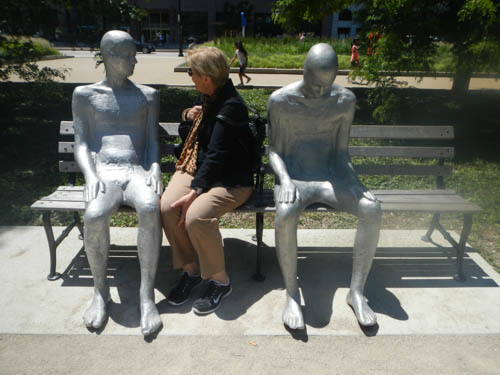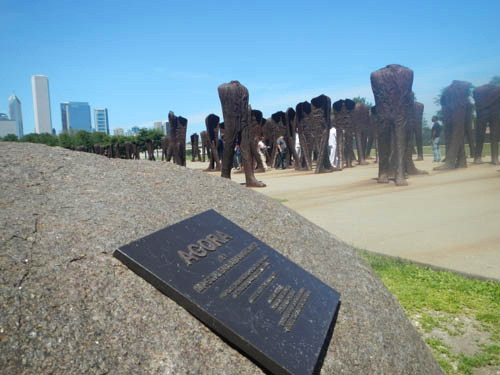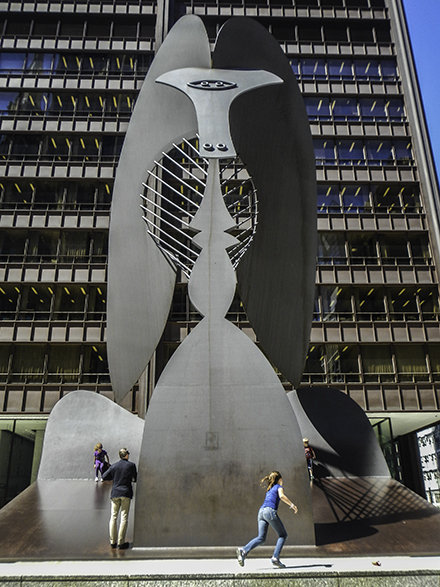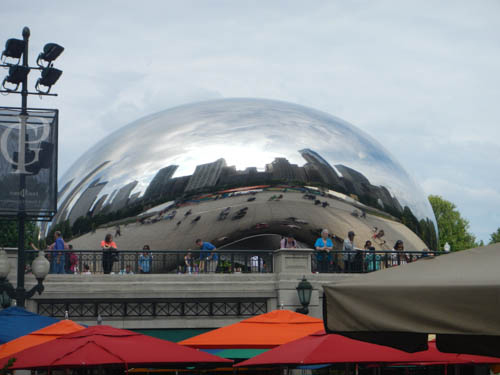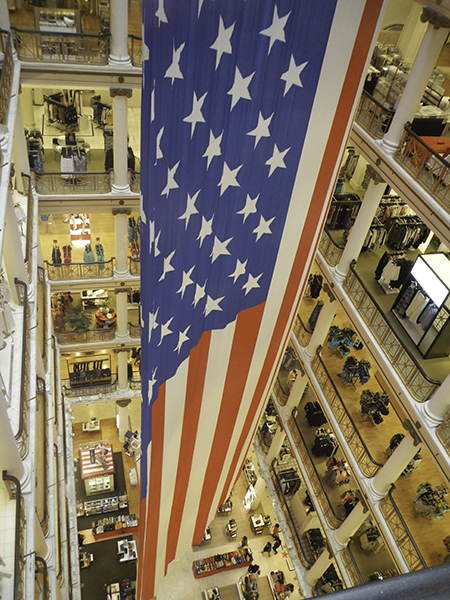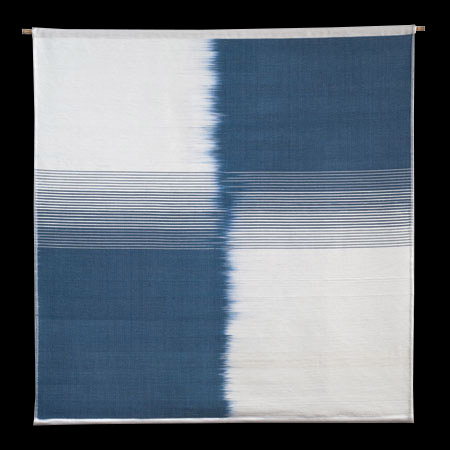Chicago is a terrific town for walking. There is public sculpture everywhere of the most enjoyable kind — kids play on it; adults revel in it and the perspective alters as your vantage point changes.
There are great galleries and museums and entertaining finds around every corner. There are bars and restaurants aplenty — on the river, with patios, with views and truly exceptional food.
We were there for the opening of Ethel Stein: Master Weaver at the Art Institute of Chicago (through November 9, 2014). The weather was ideal, we wandered for hours and found much to amuse and admire, as you can see.

